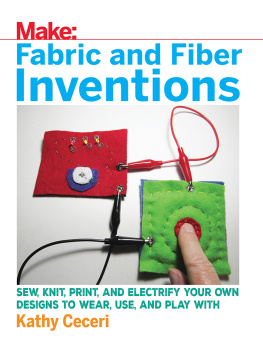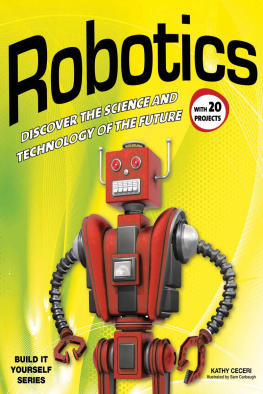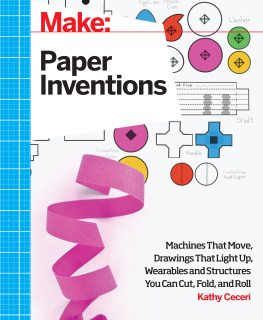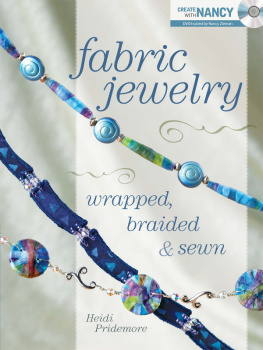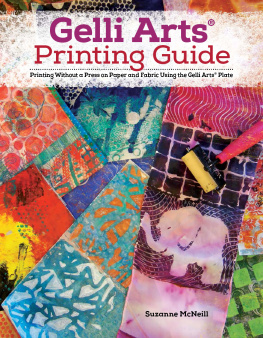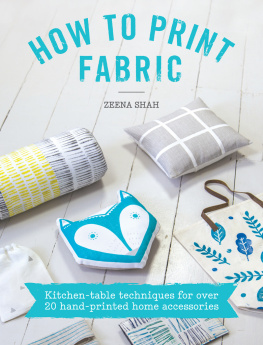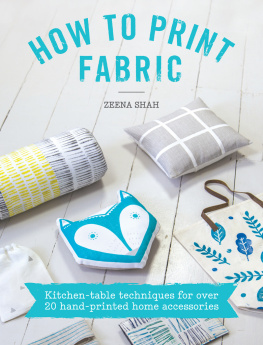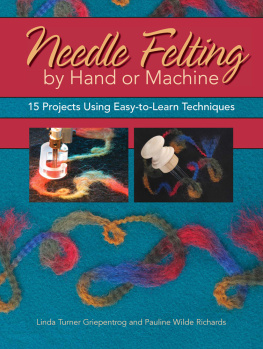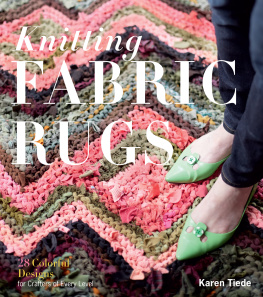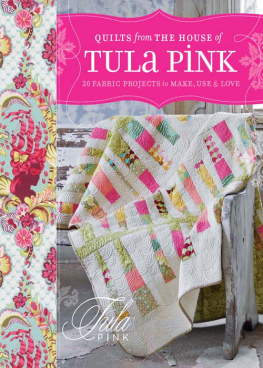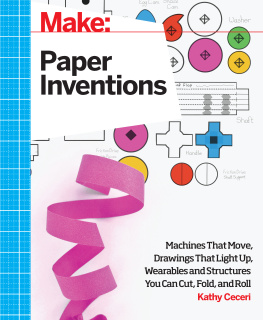
Copyright 2017 Kathy Ceceri. All rights reserved.
Printed in Canada.
Published by
Maker Media, Inc.
1700 Montgomery Street, Suite 240
San Francisco, CA 94111
Maker Media books may be purchased for educational, business, or sales promotional use. Online editions are also available for most titles (safaribooksonline.com). For more information, contact our corporate/institutional sales department: 800-998-9938 or corporate@oreilly.com .
Publisher: Roger Stewart
Editor: Patrick DiJusto
Copy Editor: Rebecca Rider, Happenstance Type-O-Rama
Proofreader: Elizabeth Welch, Happenstance Type-O-Rama
Interior Designer and Compositor: Maureen Forys, Happenstance Type-O-Rama
Cover Designer: Maureen Forys, Happenstance Type-O-Rama
Indexer: Valerie Perry, Happenstance Type-O-Rama
Sewing icon designed by Smashicons from Flaticon
October 2017: First Edition
Revision History for the First Edition
2017-10-02 First Release
See oreilly.com/catalog/errata.csp?isbn=9781680452273 for release details.
Make:, Maker Shed, and Maker Faire are registered trademarks of Maker Media, Inc. The Maker Media logo is a trademark of Maker Media, Inc. Make: Fabric and Fiber Inventions and related trade dress are trademarks of Maker Media, Inc. Many of the designations used by manufacturers and sellers to distinguish their products are claimed as trademarks. Where those designations appear in this book, and Maker Media, Inc. was aware of a trademark claim, the designations have been printed in caps or initial caps. While the publisher and the author have used good faith efforts to ensure that the information and instructions contained in this work are accurate, the publisher and the author disclaim all responsibility for errors or omissions, including without limitation responsibility for damages resulting from the use of or reliance on this work. Use of the information and instructions contained in this work is at your own risk. If any code samples or other technology this work contains or describes is subject to open source licenses or the intellectual property rights of others, it is your responsibility to ensure that your use thereof complies with such licenses and/or rights.
978-1-680-45227-3
Safari Books Online
Safari Books Online is an on-demand digital library that delivers expert content in both book and video form from the worlds leading authors in technology and business. Technology professionals, software developers, web designers, and business and creative professionals use Safari Books Online as their primary resource for research, problem solving, learning, and certification training. Safari Books Online offers a range of plans and pricing for enterprise, government, education, and individuals. Members have access to thousands of books, training videos, and prepublication manuscripts in one fully searchable database from publishers like OReilly Media, Prentice Hall Professional, Addison-Wesley Professional, Microsoft Press, Sams, Que, Peachpit Press, Focal Press, Cisco Press, John Wiley & Sons, Syngress, Morgan Kaufmann, IBM Redbooks, Packt, Adobe Press, FT Press, Apress, Manning, New Riders, McGraw-Hill, Jones & Bartlett, Course Technology, and hundreds more. For more information about Safari Books Online, please visit us online.
How to Contact Us
Please address comments and questions to the publisher:
Maker Media, Inc.
1700 Montgomery Street, Suite 240
San Francisco, CA 94111
You can send comments and questions to us by email at .
Maker Media unites, inspires, informs, and entertains a growing community of resourceful people who undertake amazing projects in their backyards, basements, and garages. Maker Media celebrates your right to tweak, hack, and bend any technology to your will. The Maker Media audience continues to be a growing culture and community that believes in bettering ourselves, our environment, our educational systemour entire world. This is much more than an audience, its a worldwide movement that Maker Media is leading. We call it the Maker Movement.
To learn more about Make: visit us at makezine.com. You can learn more about the company at the following websites:
Maker Media: makermedia.com
Maker Faire: makerfaire.com
Maker Shed: makershed.com
Maker Share: makershare.com
To my mom, Deb Gradner, who showed me how to make my first toothpick knit pinand how to teach a righty if youre a lefty. (You face each other, like in a mirroreasy!)
Acknowledgments
T hanks to the following people for their help and inspiration:
- Hanna, Carmen, and Eamon Heneghan and their mom Susie
- Rebecca Angel Maxwell (and a hearty shout-out to her nieces, Ayla and Thea Goldman)
- Jackie Reeve
- Beth Levine
- Julie Lewis
- Becky Stern
- Harriett Riddell
- Jesse Seay
- Hannah Perner-Wilson
- Leah Buechley
- The teams at Maker Media and Happenstance Type-O-Rama who help bring these books to life
Introduction
How to Be a Fabric and Fiber Inventor
The oldest sewing needles ever found date back more than 20,000 years. They were made of bone and were probably used to make animal skins into clothes. Since that time, fabric and fiber inventions have changed the world we live in.
Like our early ancestors, we still spin the hair from sheep, llamas, and rabbits (not to mention fibers from silkworm cocoons) into yarn. We use old-fashioned tools to weave plants like cotton and flax (for linen) into yards of material. But today, in the laboratory, we also create fabric from plastics like nylon, polyester, and acrylic that can stop bullets (Kevlar), keep rain off while letting our skin breathe (Gore-Tex), and hold our sneakers closed (Velcro).
Natural and human-made textiles are used to make every kind of wearable, from simple robes to the latest fashions, and from protective gear for firefighters to space suits used by astronauts. Very soon, you may be wearing clothing that generates enough electricity to power your phone from your movements or from the sun, or light-up jackets that trigger turn signals on your bicycle when you lean to the right or left.
Over thousands of years, we have gone from making heavy woolen tents to shelter us in the desert, and canvas sails to power ships across the sea, to lightweight fabrics to take camping that can fold up and fit in a pocket. And we use decorative fabric and fiber to make furnishings for the home and create spaces in which to live and work.
All these things are possible because of people who came up with new kinds of textiles and new ways to work with them. Whether you are an artist or designer trying to create something beautiful or interesting, or an engineer or scientist who wants to solve a problem or fill a need, the invention process is pretty much the same:
- Choose your challenge. Decide on your goal to begin to narrow down what you will work on.
- Brainstorm ideas. It doesnt matter how crazy they arewild ideas help you discover new angles to explore. Make sketches and write down notes. Then go through your ideas and pick one that looks promising.
- Do your research. What do you need to know about the challenge youre taking on? What have other people done that you can learn from? Look up news articles, collect images, check out videos, and talk to experts to help focus your ideas.
- Create a prototype. The best way to find out if your idea is a good one is to create a prototype, a quick model that lets you see what your invention will be like in real life. Making a prototype gives you a taste of whats involved in building your invention.
Next page
